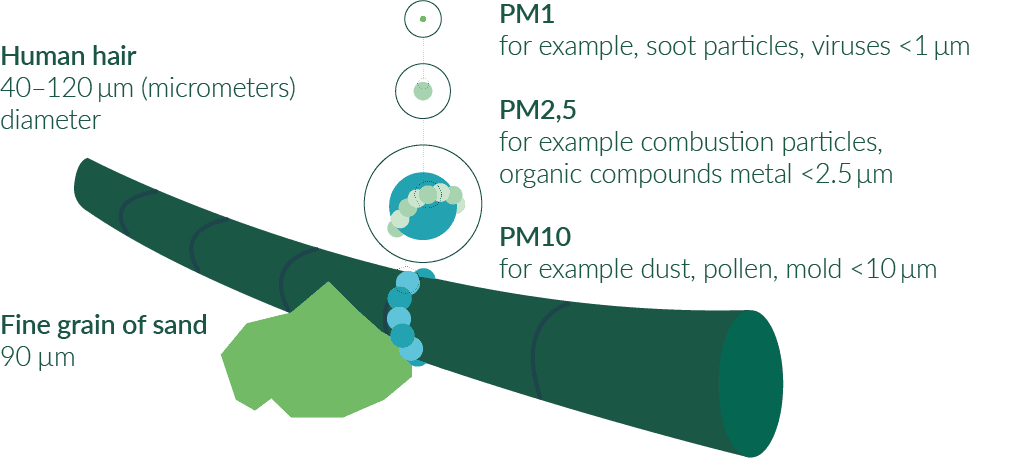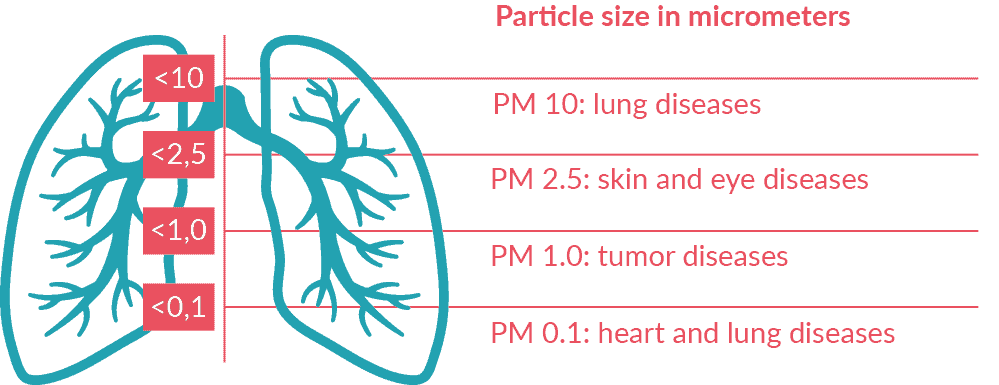PROBLEM FINE DUST
We bring nature back to the city
Air pollution is one of the biggest urban environmental problems and has serious implications for human health. According to the World Health Organization, over 91% of people in cities breathe polluted air with levels above recommended limits¹. Polluted air, and especially the fine dust it contains, attacks all human organs, leading to everything from heart and lung problems to dementia, cancer and skin diseases. According to the European Environment Agency, 253,000 people die prematurely each year in Europe as a result of polluted air², and more than 8 million³ worldwide.
At Green City Solutions, we want to tackle this environmental problem head-on and make a positive contribution to sustainable, healthy urban development.
With this goal in mind, we have developed the world’s first regenerative Bio-tech filter to quantifiably improve the air quality.
¹,³ WHO | ² Europäisches Umweltamt
Fine dust in detail
What is air pollution?


Air pollution can be caused by solid particles such as soot or gases like nitrogen dioxide. In the city, particulate matter makes up a large part of air pollution. It consists of a complex mixture of tiny particles. The nasty thing about it is that you can usually neither see nor smell it.

Source: Micronairblue
Health impact
Depending on the particle size, fine dust penetrates the body to different depths. Regular exposure to fine dust causes the tiny particles to accumulate in the body over the years and can trigger a range of diseases. The most common health consequences include lung and cardiovascular diseases.

Source: Micronairblue, Federal Environmental Agency
Urban air pollution
Example Munich
13
micrograms
per cubic meter is the average concentration of particulate matter (PM2.5) in Munich.
215
cigarettes
is the average number of cigarettes smoked by a person in Munich each year.


